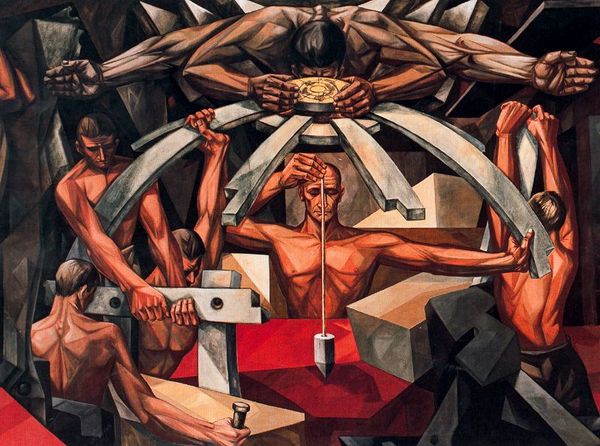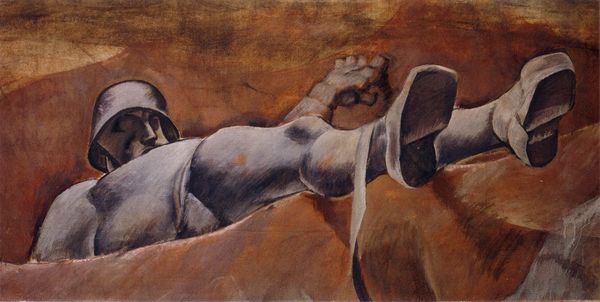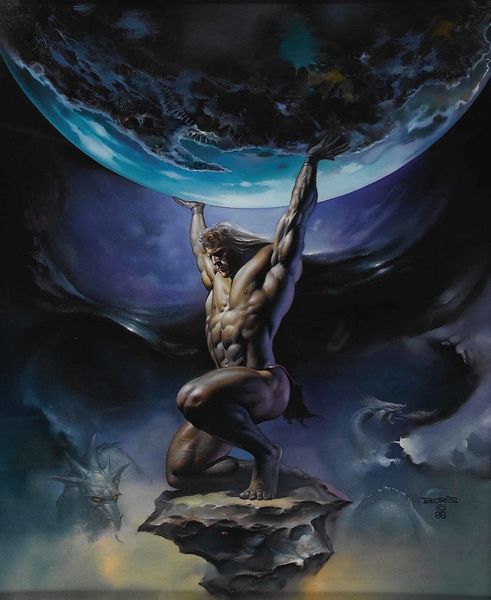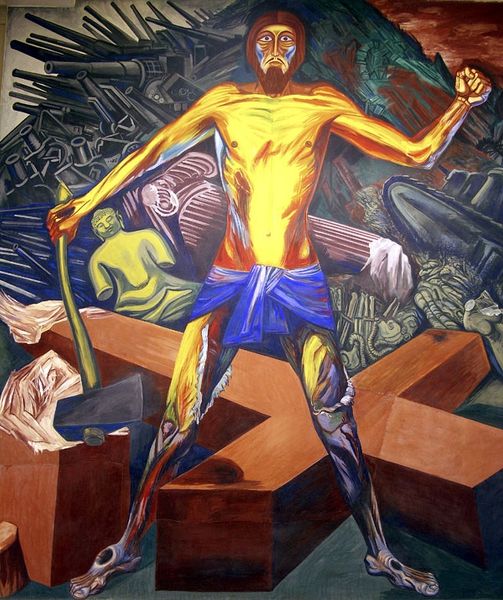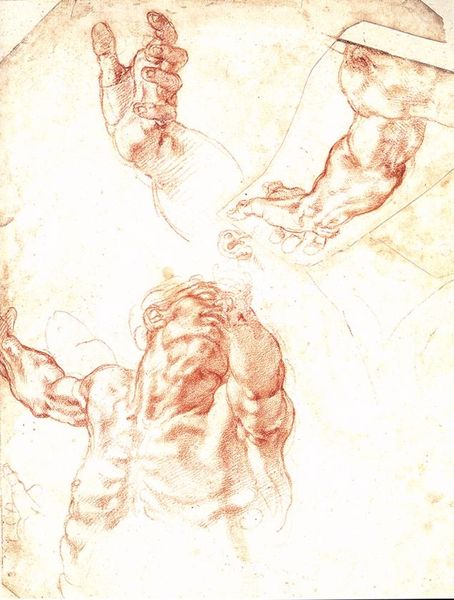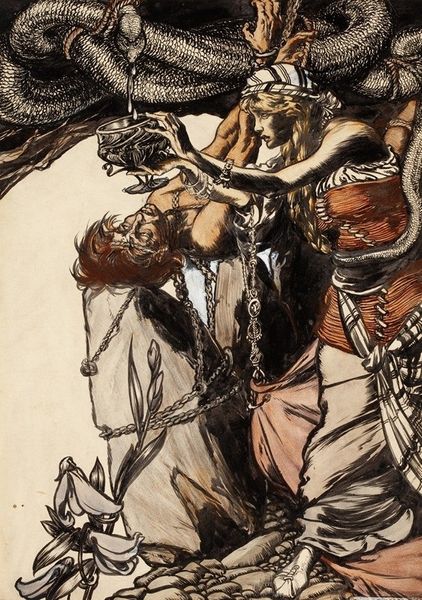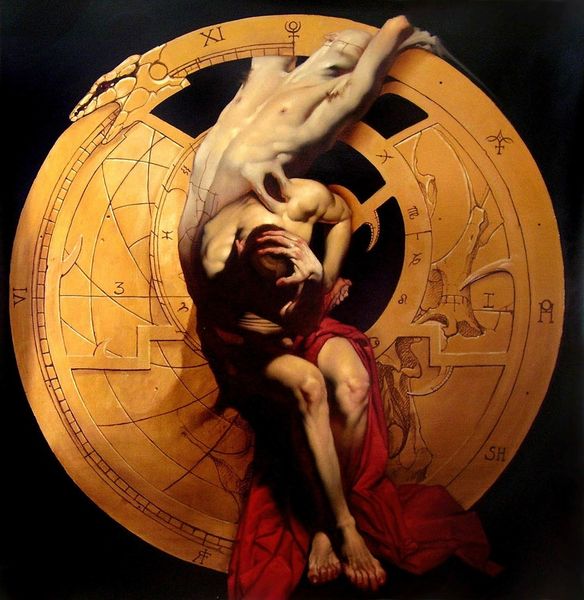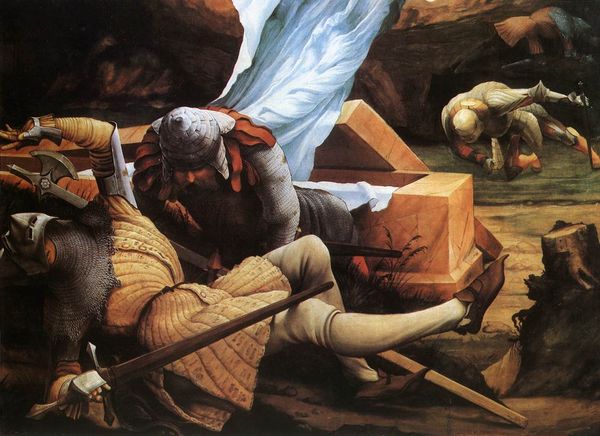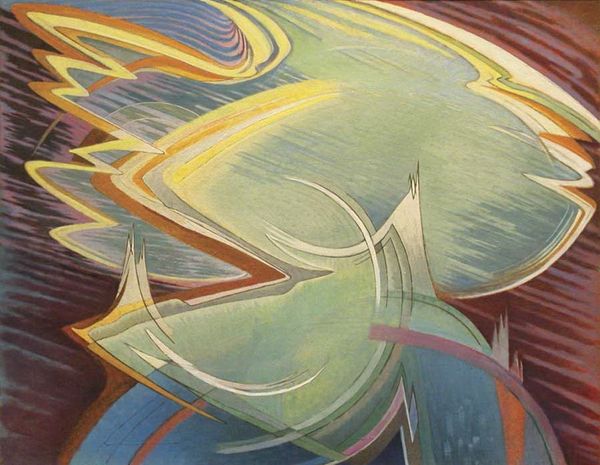
tempera, mural
#
narrative-art
#
tempera
#
figuration
#
social-realism
#
oil painting
#
history-painting
#
mural
Copyright: Vela Zanetti,Fair Use
Curator: Here we have a detail from Vela Zanetti's colossal "Mural of Human Rights. Emblem UN", a tempera mural dating back to 1953. Editor: My first impression? The scale feels both intimate and immense, the cropped composition offering just a partial view into something monumental. There’s also a sense of intense concentration, almost reverence, in the central figure’s posture. Curator: Zanetti painted this mural for the United Nations headquarters in Geneva, as a symbol of post-war ideals. He worked in the tradition of social realism, popular amongst many Latin American muralists after the Mexican Revolution, using art to depict social realities and express ideological messages. Editor: Absolutely. Looking at this section, we see a figure hunched over what appears to be a representation of the Earth. Its focus immediately calls to mind contemporary conversations surrounding climate justice and collective responsibility. Curator: The emblem is indeed a stylized depiction of the globe, sectioned, held carefully by working hands, signifying, in the context of its time, the potential of unity and global cooperation for progress. The social-realist style simplifies forms to heighten emotional impact and accessibility. Editor: Though 'accessibility' raises questions for me. Whose stories get told in these grand narratives of unity? How are concepts of identity, race, and gender embedded—or erased—within those portrayals of a universal human experience? Who gets represented here? Curator: It’s an excellent point. Considering the socio-political context of the time, dominated by Western powers, the universality that the mural sought to project may have reflected certain viewpoints more than others, subtly enforcing established power dynamics through the imagery, regardless of intention. Editor: It reminds us of the need for constant interrogation when we engage with art, understanding not only the immediate message, but the broader, often unspoken narratives within and surrounding it. It's not enough to see a message of human rights; we have to consider who defines those rights, and for whom. Curator: A complex perspective, but invaluable, I agree. Zanetti’s mural aimed to champion internationalism. Now we consider how the message has aged, transformed, been possibly distorted, challenging us to constantly reimagine and act upon the ideal it espoused. Editor: Absolutely. To understand a piece such as this we should look into its roots. Who paid for it, and why. It speaks as much to a present desire for international action, as it reflects an agenda rooted in colonial discourse and Western dominance. This informs so much of our present geopolitical context and must be explored when assessing a piece such as this.
Comments
No comments
Be the first to comment and join the conversation on the ultimate creative platform.
